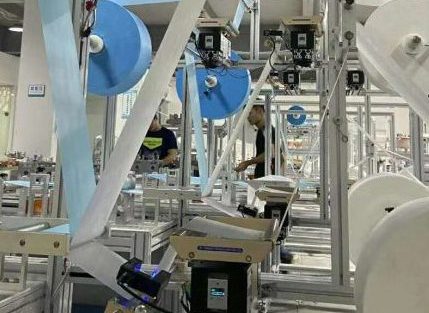🔋 Revolutionizing Motion Control The Power of Hysteresis Brakes Dynamometers and Motor Test Systems
In the fast-paced world of industrial innovation, precision and reliability are non-negotiable. Whether you’re engineering next-gen electric vehicles, optimizing aerospace systems, or pushing the boundaries of automation, the right testing and motion control equipment isn’t just a luxury—it’s a necessity. Enter hysteresis technology: a game-changer in brakes, clutches, and dynamometers that combines elegance with brute-force accuracy. Let’s dive into how these systems are reshaping industries. ### 🛠️ Hysteresis Brakes: Where Friction Meets Finesse Traditional friction brakes have their limits—wear and tear, heat dissipation issues, and inconsistent torque. Hysteresis brakes sidestep these pitfalls entirely. By leveraging magnetic fields to generate resistance, they deliver smooth, contactless torque control. No physical wear. No messy maintenance. Just pure, repeatable performance. Imagine a high-speed packaging line where delicate products require precise tensioning. A hysteresis brake adjusts torque on the fly, ensuring materials glide through without tearing or slippage. Or picture a robotics lab testing servo motors under variable loads—these brakes simulate real-world conditions without the downtime of mechanical adjustments. Key advantages: – Zero mechanical wear for longer lifespans – Instant torque adjustment with microsecond response times – Silent operation ideal for noise-sensitive environments Case in point: A European automotive supplier reduced calibration delays by 40% after switching to hysteresis brakes for their electric powertrain testing rigs. ### 🔬 Hysteresis Dynamometers: The Ultimate Power Translators Testing motors and engines isn’t just about measuring horsepower—it’s about capturing every ripple in performance. Hysteresis dynamometers excel here, absorbing and measuring power with surgical precision. Their secret? Using eddy currents induced in a conductive disc to create load, all while maintaining non-contact operation. Take wind turbine generators, for example. During endurance testing, a hysteresis dynamometer can simulate years of variable wind loads in weeks, providing data on efficiency decay that’s accurate to 0.1%. Or consider drone motor manufacturers who use compact hysteresis dynos to validate thrust-to-power ratios across millions of RPM cycles. Why engineers swear by them: – Broad speed range capability (from near-zero to 30,000+ RPM) – Immunity to inertia-induced measurement errors – Seamless integration with regenerative energy recovery systems A Tokyo-based robotics startup recently credited hysteresis dynamometers for slashing their motor validation time by 60%, accelerating their product launch in a cutthroat market. ### ⚙️ Hysteresis Clutches: Precision Coupling, Redefined In applications demanding slip-controlled torque transmission—think textile machinery or medical device assembly lines—hysteresis clutches shine. By magnetically “gluing” input and output shafts without physical contact, they eliminate backlash and provide infinitely adjustable torque limits. Picture a semiconductor wafer handler where microscopic alignment is critical. Dynamometer calibration solutions allows micron-level positional control while preventing damage from sudden load spikes. Or envision a high-end 3D printer extruder maintaining perfect filament tension, layer after layer, thanks to the clutch’s whisper-fine adjustments. Standout features: – Maintenance-free operation even in dusty/vacuum environments – Linear torque proportionality for PID-friendly control – Sub-millisecond engagement/disengagement An Italian luxury car manufacturer now uses hysteresis clutches in their automated paint booths, achieving a 70% reduction in overspray defects through precise robotic arm motion control. ### 🏭 Motor Test Systems: The Nerve Center of Innovation Modern motor testing isn’t a single instrument—it’s an ecosystem. Advanced motor test systems weave together hysteresis brakes, dynamometers, and sensor arrays into a cohesive diagnostic powerhouse. These setups don’t just check if a motor works; they predict how it will age, where it might fail, and how to optimize its DNA. A leading EV battery plant in Nevada uses multi-axis test rigs with hysteresis components to simulate decade-long battery duty cycles in 72 hours. The system tracks everything from harmonic distortions to thermal creep, feeding AI models that refine motor designs iteratively. Core capabilities of top-tier systems: – Real-time efficiency mapping across torque-speed spectra – Automated ISO/IEC compliance reporting – Cloud-enabled remote monitoring and diagnostics When a South Korean shipbuilder integrated hysteresis-based test systems, they uncovered a 12% energy loss in auxiliary thrusters that traditional methods had missed—saving millions in projected fuel costs. ### 🌐 The Future Is Magnetic (And We’re Here to Energize It) As industries pivot toward electrification and smart manufacturing, hysteresis technology stands at the crossroads. Its marriage of physics and digital control creates possibilities that mechanical systems simply can’t match. From whisper-quiet drone motors to megawatt-scale turbine generators, the applications are as limitless as magnetic fields themselves. But the true magic lies in synergy. Pairing hysteresis brakes with AI-driven dynamometers creates test environments that learn and adapt. Combining clutch precision with IoT-enabled motor analyzers births self-optimizing production lines. This isn’t just equipment—it’s the scaffolding upon which industries reinvent themselves. So, whether you’re battling torque ripple in micro-stepper motors or scaling up hydrogen fuel cell production, remember: In the silent hum of a hysteresis brake’s magnetic field, there’s a universe of untapped potential. The question isn’t whether you need this technology—it’s how fast you can harness it. After all, in the race to perfect motion, friction is the enemy… unless it’s the kind that sparks revolutions. 🔥 